
Perspective Sketch of The Krishnamurti Centre
Here we look at the origins and intentions of The Krishnamurti Centre, with accounts from some of those involved during its creation.
To find out more about the Centre and to book your stay, please visit krishnamurticentre.org.uk
There have been talks every year, seminars and all the activities of audio and video recording. We have reached a point now to make Brockwood much more than a school. It is the only centre in Europe representing the teachings, which are essentially religious. It must be a centre for those who are deeply interested in the teachings, a place where one can stay and study.
In the old days, an ashrama, which means retreat, was a place where people came to gather their energies, to dwell, and to explore deeper religious aspects of life. Modern places of this kind generally have some sort of leader who guides, interprets and dominates. Brockwood must have no such leader or guru, for the teachings themselves are the expression of that truth which serious people must find for themselves. Personal cult has no place in this. It is a place which must demand the awakening of that intelligence which comes with compassion and love. The Study Centre will enhance, enrich, bring a new colour, a new perfume to the School.
Krishnamurti

Breaking Ground for the Centre
We began looking at the least expensive form of architecture. A visit was arranged to see a large A-frame building in the New Forest. No one felt this design was right. It just wasn’t aesthetically pleasing enough, and there was no money anyway. On the way back in the car, Friedrich Grohe said he would donate the money. With this very generous donation, it seemed it might be possible. It was at this time that Scott [Forbes] and I were asked by Krishnaji to be responsible for building the Centre and for me to manage it. We found architects, had a small model built and requested planning permission.
Kathy Forbes
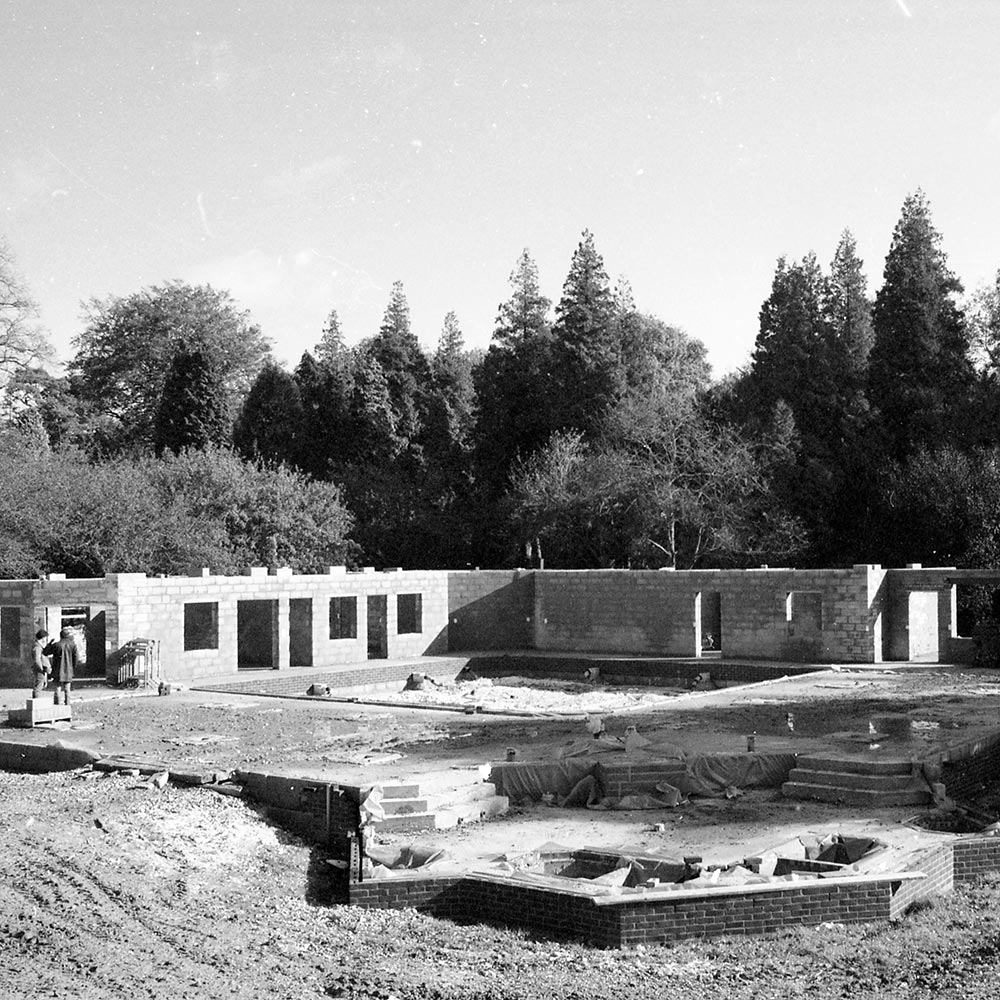
The Centre Begins To Take Shape
Krishnaji felt that there should be something for adults, a place where they can come to study the teachings. It must be uniquely for that. It isn’t that they come to do some project of their own – some people have wanted to come and write a book or something – it’s to come to study in the quiet, and everything should be available for them there. But the importance of quietness was extremely relevant to this place. He said there must be nothing going on there but that people bring their own interest, and they come to study. And it should be comfortable, it should be beautiful, it should be, above all, quiet.
Mary Zimbalist
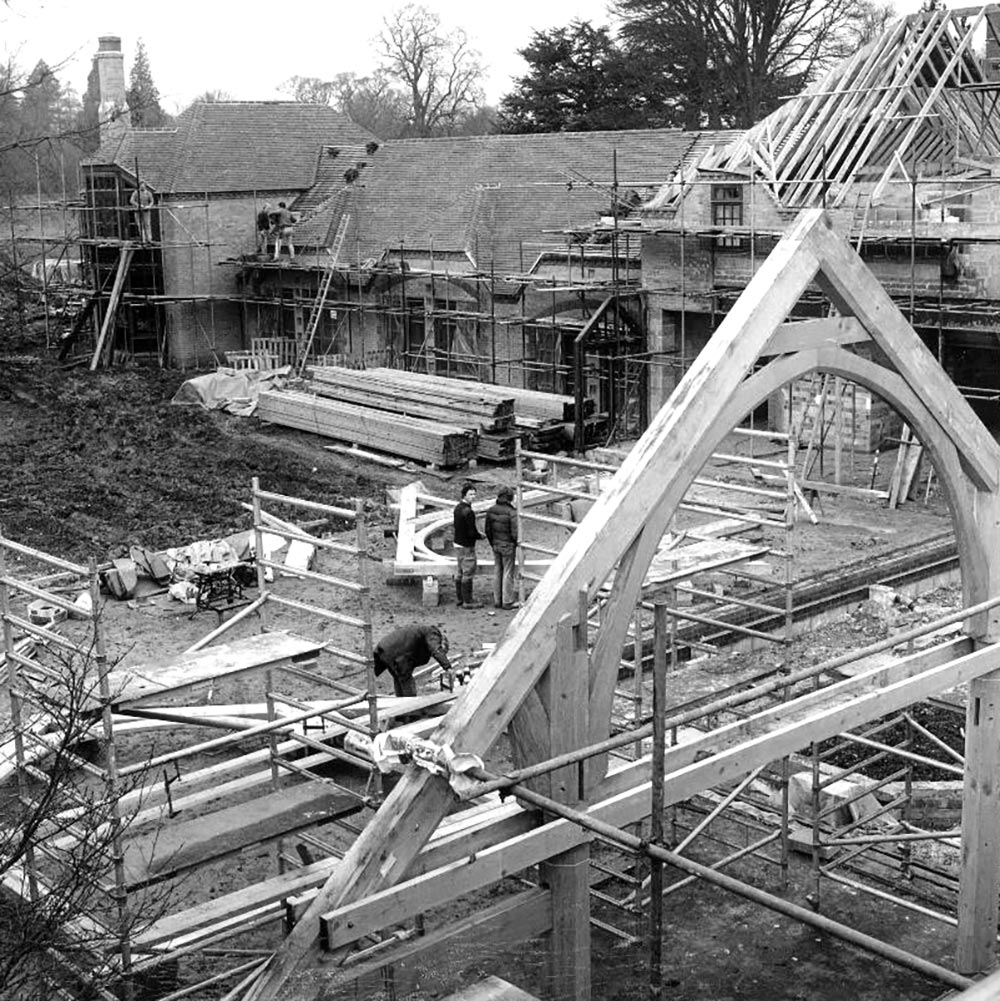
Traditional Oak Frame Construction
We decided to look at some of the traditional buildings in the local Hampshire villages. This meant barns, churches, cottages, farm buildings and outhouses. We very soon learned that there was a particular time-honoured way of construction in this area, one that went back many centuries and utilised the available local natural resources.
Keith Critchlow
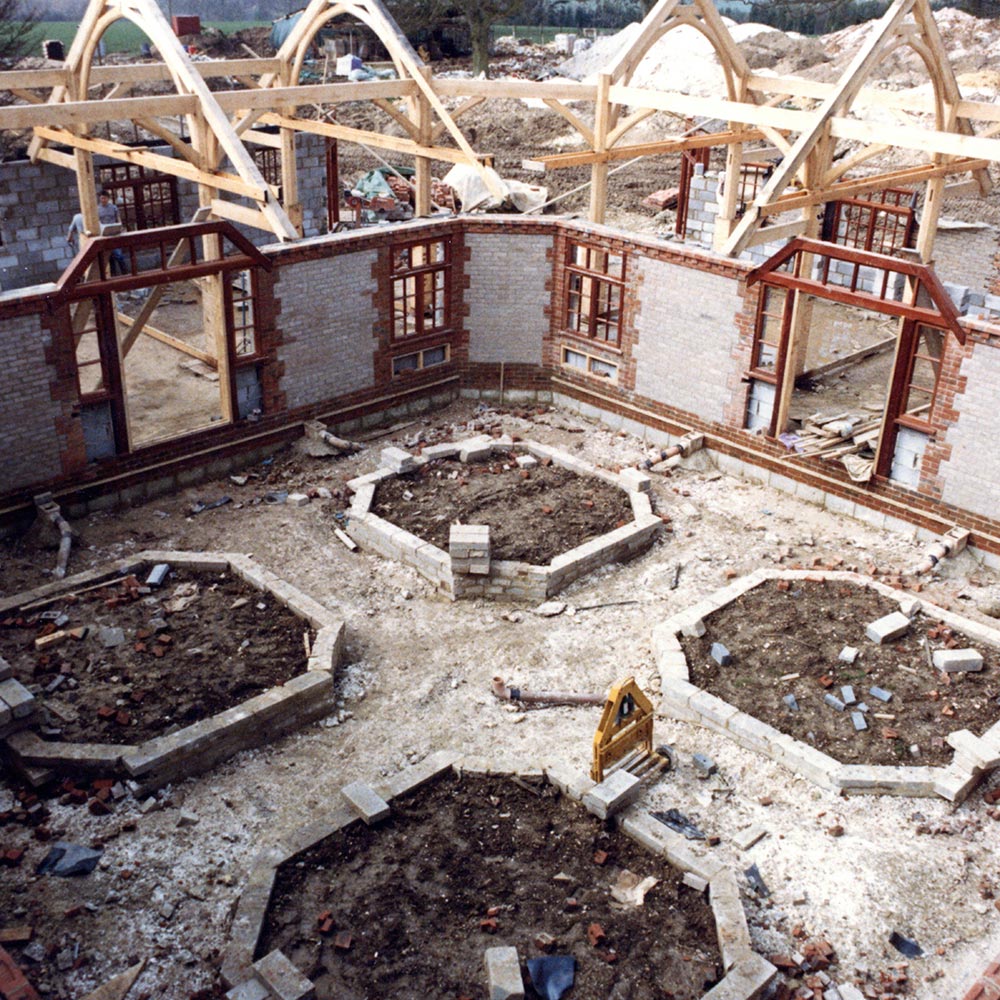
Building the Courtyard, Dining and Sitting Rooms
Krishnaji picked out the materials for the building (for example, the bricks and roof tiles), and looked at all the drawings as they were produced. He appreciated building perspective drawings, and Keith Critchlow provided lots for him from different angles, as well as of architectural details, like the entrance, the insides of rooms, etc. The Centre is absolutely unique in being a building that Krishnaji made a sustained and very substantial contribution to its beauty. So, it has a kind of beauty that Krishnaji found beautiful.
Scott Forbes
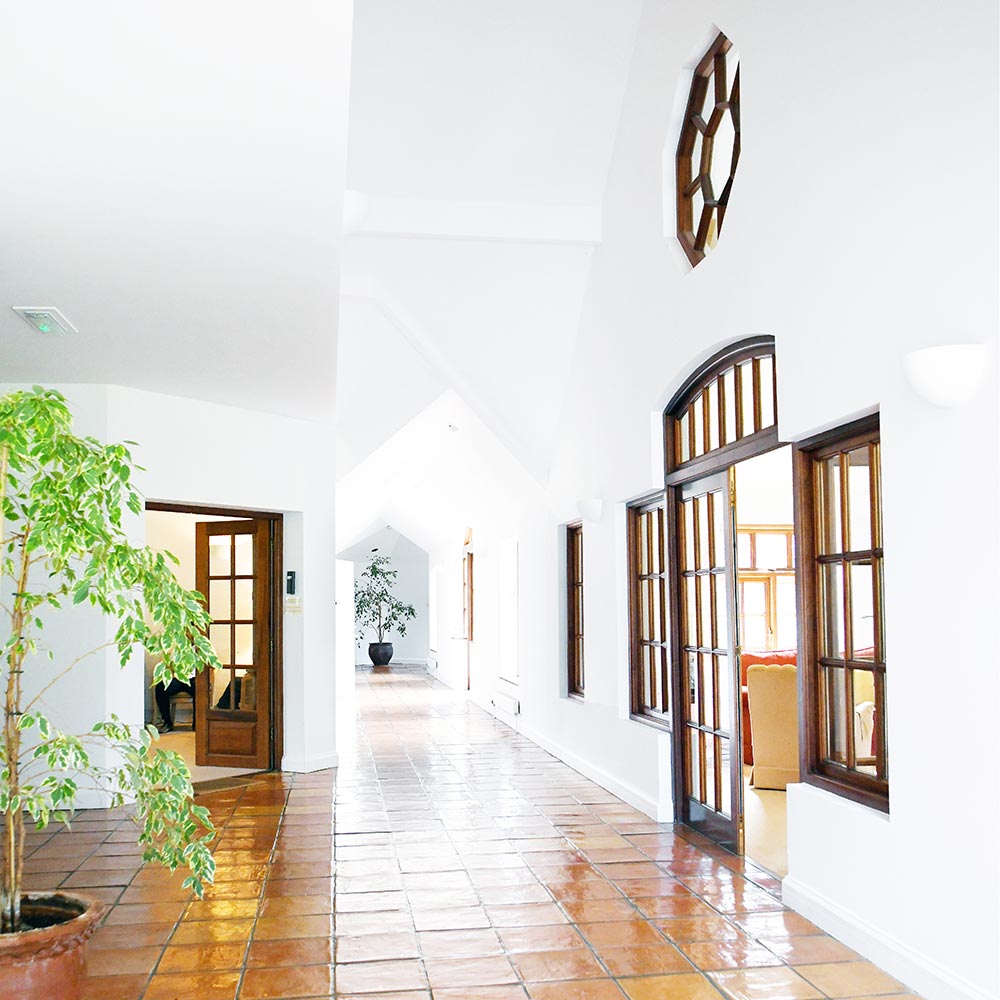
The Centre’s Reception Area
A seriously intentioned building needs to follow, in some way, the human form. On this basis, I did a drawing of a human body sitting in what is generally known as the lotus position of legs folded up underneath the torso, with the hands resting on the knees. Which seemed appropriate for the present circumstance, the position of a person in study, contemplation or even meditation.
Keith Critchlow
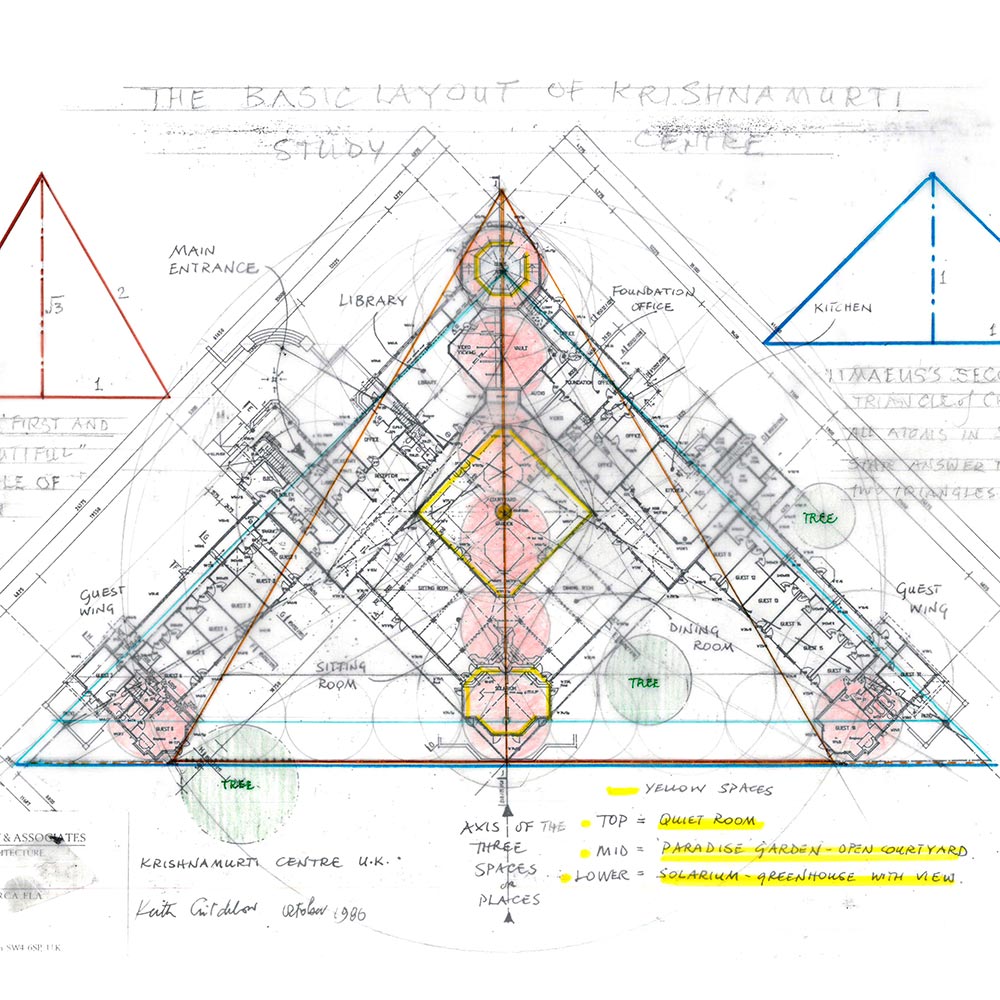
Preliminary Plans of The Krishnamurti Centre
The requirements of the Centre were quite complex yet unified. This resulted in very careful thought as to where the different organic bodily parts should be located. The critical or focal corner of the building was the most easterly facing. This corner was the critical unification as well as generating aspect of the whole centre. The ‘point of departure’, as it could be called, is the place of the Quiet Room, where all who visit or work there can find silence and peace. Krishnamurti had said this room should be the ‘fountain and the fire’ of the whole building. He only requested of me that it shouldn’t be too ‘chapel-like’. From my perspective, it represents sitting within one’s own heart, the true place of silence.
Keith Critchlow
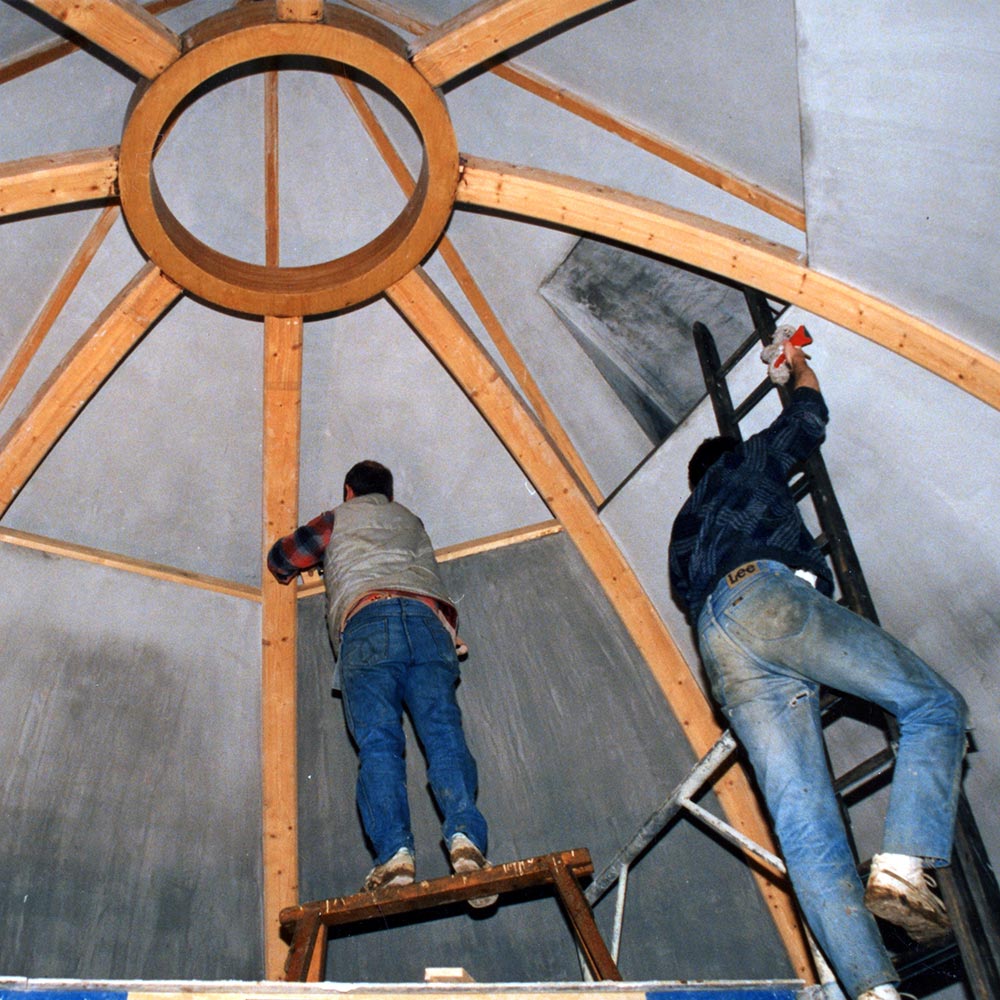
Building the Quiet Room
In the beginning, my function was to set up the interior of the Centre. I had to imagine what the building would look like, what each room would look and feel like. I imagined what it might be like to come to a place like this and what my needs might be. Everyone would be well taken care of. Their basic needs would be met and they should feel safe and comfortable, so all that was left to do and the most important thing would be to take the opportunity to immerse themselves in the teachings.
Kathy Forbes
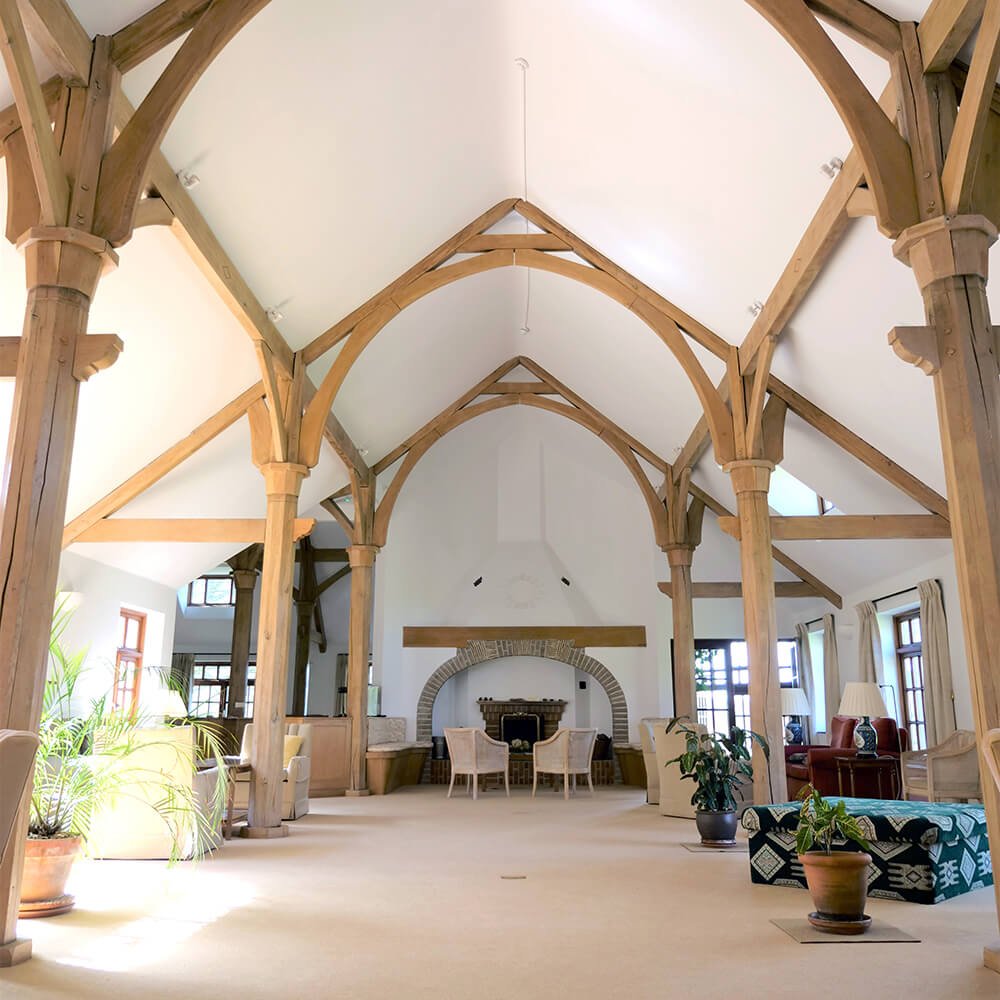
Sitting Room, The Krishnamurti Centre
It took a lot of time and energy to maintain the necessary simplicity, austerity, cleanliness and the atmosphere at every level possible; and we maintained it to a large extent. Yet we had to constantly remind ourselves that, while all that was necessary, the outer order and the beauty of the place should not become a disproportionate concern, a disguise, an escape, a substitute or a measure for the inner work, but rather the outer work would flow out of our inner work. While many visitors came from far afield ‘to drink at the fountain’, we also had to remind ourselves that we too were there for the same reason, for it is easy to lose sight of that.
Raman Patel
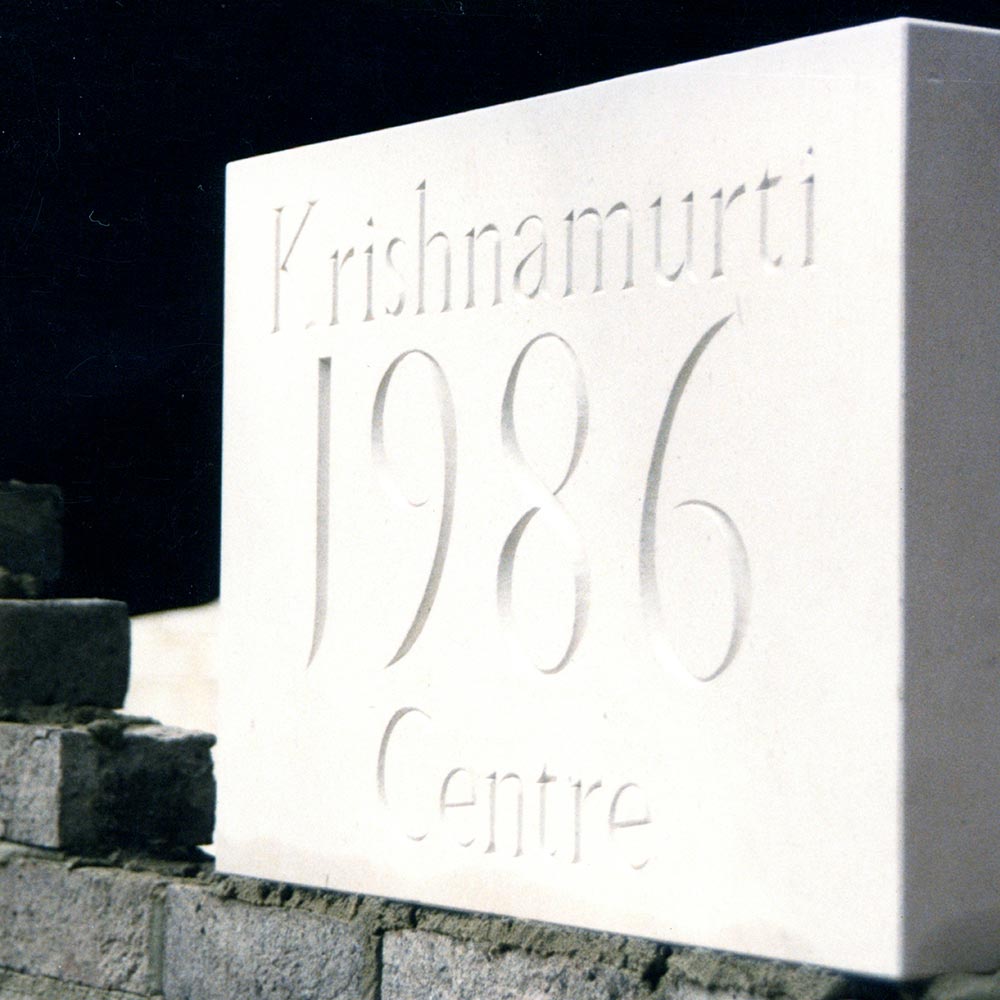
Datestone Next to the Centre’s Entrance
Visitors often remark that the Centre has great meaning for them because otherwise they’d be inquiring entirely on their own. And one feels this common thread of asking questions about life there, even if there are different ways to do it.
Friedrich Grohe
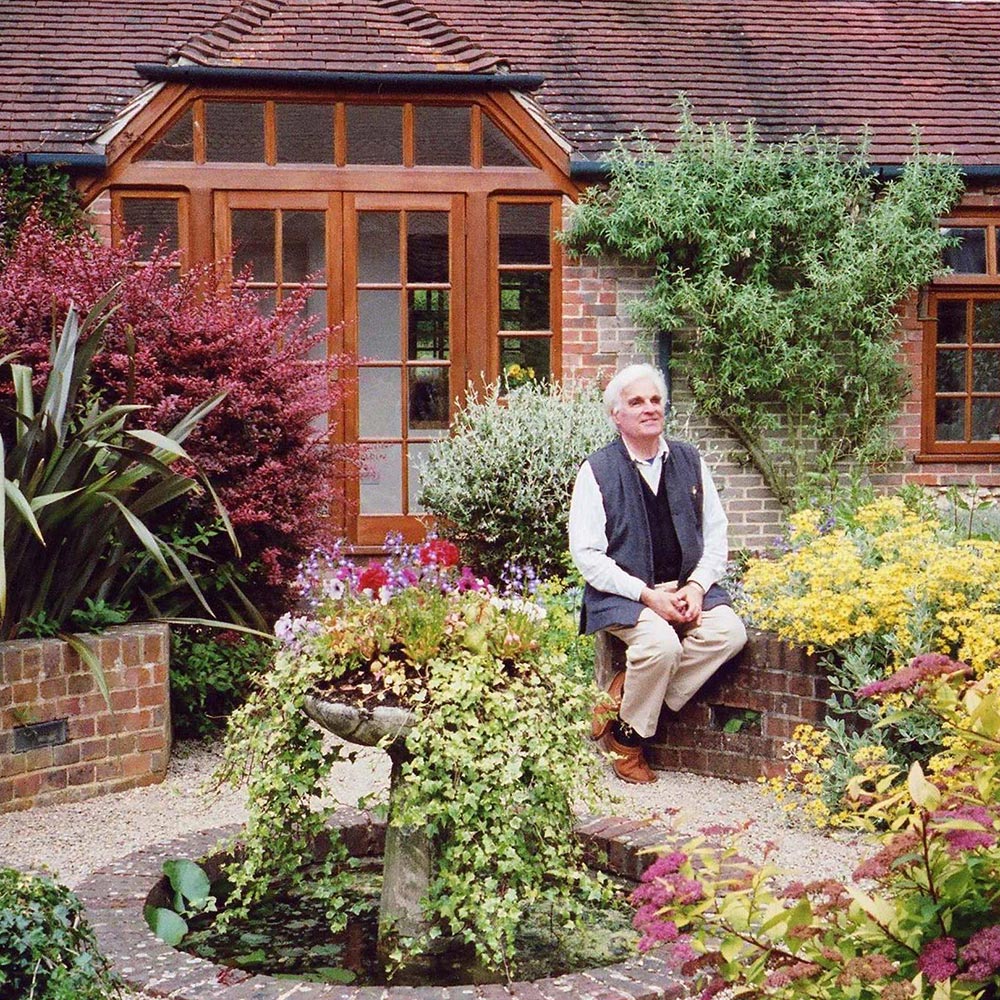
Keith Critchlow at the Centre in the Early 1990s
After a talk, Krishnaji would sometimes say, ‘Something new came out,’ or other words to that effect, as if his own speaking out of looking with emptiness produced insights that were new to him. This seems to be a kind of speaking that we seem generally to know very little about, but which Krishnaji indicated was available to us all. Krishnaji intended the Centre to be a place where serious people, interested in his teachings, could meet and generate this kind of speaking, these kinds of ‘dialogues’ that facilitate insights. As the insights Krishnaji described seem as needed today as they ever were, if not more so, the Centre as a place that brings people together in a way that facilitates such insights is more relevant than ever.
Scott Forbes
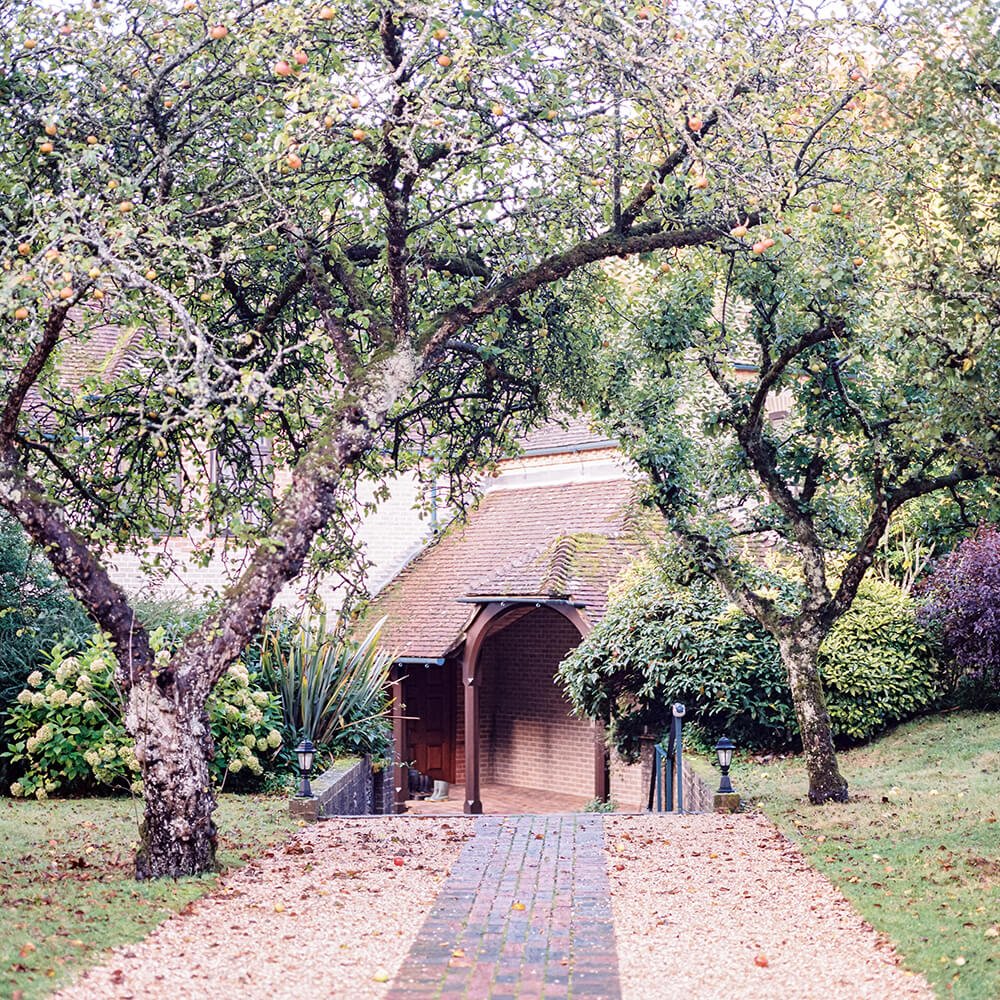
The Entrance to The Krishnamurti Centre
There seems to be a religious sense in the fabric of the Centre – and this was there from the very beginning. Krishnaji said of it: ‘The first stone we lay should be religious,’ and that surely has been so. In the symbolic sense, let us and everyone associated with the Centre all continue to lay down spiritual stones here. If we do so, as Krishnaji said, ‘The Study Centre will enhance, enrich, bring a new colour, a new perfume to the School’ – and, of course, to so many other aspects of life.
